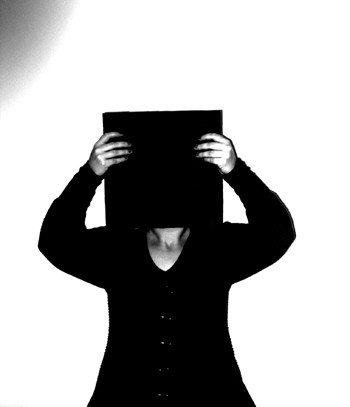Who put Grandma under the stairs?
10 - 24 Nov 2007
WHO PUT GRANDMA UNDER THE STAIRS?
Karina Bisch, Nicolas Chardon, Gyan Panchal, Clément Rodzielski and Vier5
My own position is to point out how the modernist program and forms are still available today, as they’re everywhere around us, even if they have been mishandled.
I’m not nostalgic, I want to face reality.
I know it’s a cliché to talk about Mondriaan’s patterns becoming the L’Oreal shampoo icon, but want to work with these so wellknown forms for what they are now, in a concrete way.
Experimenting the materiality of this ersatz forms is a very interesting question, as I think the Modernism is not an obsolete idea.
The pieces I chose for the Who Put Grandma Under The Stairs show all deal with this relation between pictures and materiality, like for example, the black square as a generic shape, design as a practice or leftovers as primary forms.
Sure Grandma survives and will climb back to the top of the stairs.
Karina Bisch, Born in Paris, in 1974, lives and works in Paris
“Karina Bisch surveys the real world, as she would go through a picture book, and vice versa. As an iconographer, the artist brings into play a repertoire that is part of her collection – product of a continual exploration of the urban environment, vernacular landscape, and historical referents –, an association and reinvention of forms in which notions that are specific to the avant-gardes, such as utopia, the practice and the body, are omnipresent. This archive, that is at once active and activated, consequently becomes the background of a physical relation to images, taking on various dimensions, between stylised reproductions, a raw materiality and a revolutionary nostalgia. Art like child’s play – a geometric game.”
Yann Chateigné, September 2007
Nicolas Chardon
What sort of radicalism are we talking about? That of modern avant-gardes?
“Here, when I speak of radicalism, it’s more an image of radicalism in painting. The moment I start painting is when my position on this question is the most evident. I start painting on an object, a painting, that by its very form has already resolved many of the formal issues of modernism: the fabric is a support for colors, a pattern – a grid what’s more -, and even performs a movement by deforming the grid. The action of painting is a second phase. And this phase is truly an after thought in terms of avant-garde ambitions. We can say that my painting is detached from them, even if it still manifests the symptoms. If we consider that distancing strategies are characteristic of modernism, we also need to see that the distancing in my work – the deformation of the grid – comes from a traditional act shared by all painters: stretching a canvas. In my case, radicalism is not heroic but rather everyday, archetypal.” ....
Karina Bisch, Nicolas Chardon, Gyan Panchal, Clément Rodzielski and Vier5
My own position is to point out how the modernist program and forms are still available today, as they’re everywhere around us, even if they have been mishandled.
I’m not nostalgic, I want to face reality.
I know it’s a cliché to talk about Mondriaan’s patterns becoming the L’Oreal shampoo icon, but want to work with these so wellknown forms for what they are now, in a concrete way.
Experimenting the materiality of this ersatz forms is a very interesting question, as I think the Modernism is not an obsolete idea.
The pieces I chose for the Who Put Grandma Under The Stairs show all deal with this relation between pictures and materiality, like for example, the black square as a generic shape, design as a practice or leftovers as primary forms.
Sure Grandma survives and will climb back to the top of the stairs.
Karina Bisch, Born in Paris, in 1974, lives and works in Paris
“Karina Bisch surveys the real world, as she would go through a picture book, and vice versa. As an iconographer, the artist brings into play a repertoire that is part of her collection – product of a continual exploration of the urban environment, vernacular landscape, and historical referents –, an association and reinvention of forms in which notions that are specific to the avant-gardes, such as utopia, the practice and the body, are omnipresent. This archive, that is at once active and activated, consequently becomes the background of a physical relation to images, taking on various dimensions, between stylised reproductions, a raw materiality and a revolutionary nostalgia. Art like child’s play – a geometric game.”
Yann Chateigné, September 2007
Nicolas Chardon
What sort of radicalism are we talking about? That of modern avant-gardes?
“Here, when I speak of radicalism, it’s more an image of radicalism in painting. The moment I start painting is when my position on this question is the most evident. I start painting on an object, a painting, that by its very form has already resolved many of the formal issues of modernism: the fabric is a support for colors, a pattern – a grid what’s more -, and even performs a movement by deforming the grid. The action of painting is a second phase. And this phase is truly an after thought in terms of avant-garde ambitions. We can say that my painting is detached from them, even if it still manifests the symptoms. If we consider that distancing strategies are characteristic of modernism, we also need to see that the distancing in my work – the deformation of the grid – comes from a traditional act shared by all painters: stretching a canvas. In my case, radicalism is not heroic but rather everyday, archetypal.” ....

